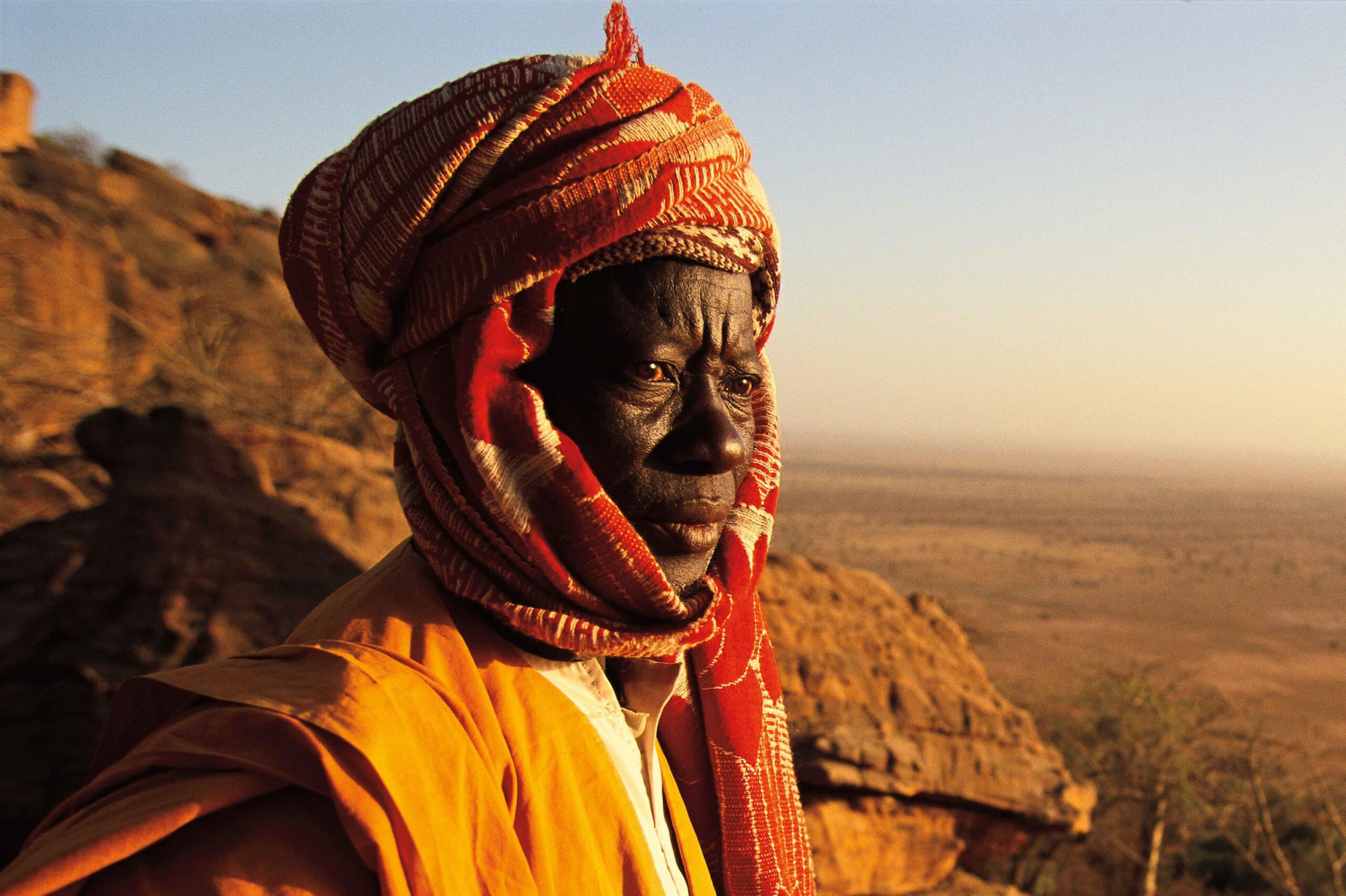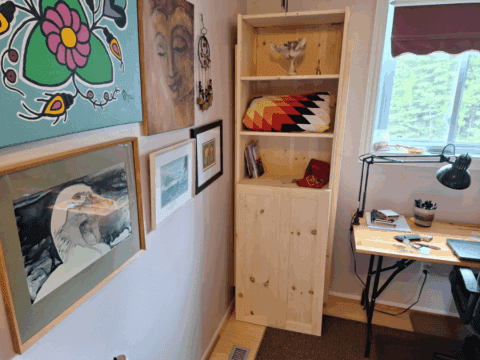Using techniques that were unimaginable a generation ago, geneticists have bridged the chasm between biology and anthropology, and in doing so have effectively proved that the genetic endowment of humanity is a single continuum. We are all brothers and sisters. Race is an utter fiction. Virtually every human alive is a descendant of a relatively small number of individuals who walked out of Africa some 60,000 years ago and then, on a journey that lasted 40,000 years — some 2,500 generations — carried the human spirit to every corner of the habitable world.
If we are all cut from the same genetic cloth, then by definition all cultures share essentially the same mental acuity, the same raw genius. Whether this intellectual capacity and potential is exercised in stunning works of technological innovation, as has been the great achievement of the West, or through the untangling of the complex threads of memory inherent in a myth — a primary concern, for example, of the Aborigines of Australia — is simply a matter of choice and orientation, adaptive insights and cultural priorities.
There is no hierarchy of progress in the history of culture, no social Darwinian ladder to success. That Victorian notion of the savage and the civilized — with European industrial society sitting proudly at the apex of a pyramid of advancement that widens at the base to the so-called primitives of the world — has been thoroughly discredited, indeed scientifically ridiculed for the racial and colonial conceit that it was. It is no more relevant to our lives today than the notion, fiercely held by clergy in the 19th century, that Earth was but 6,000 years old.
We share a sacred endowment, a common history written in our bones. It follows, as anthropologists have long maintained, that the myriad of cultures in the world are not failed attempts at modernity, let alone failed attempts to be us. They are unique expressions of the human imagination and heart, unique answers to a fundamental question: what does it mean to be human and alive? When asked this question, the cultures of the world respond in 7,000 different voices, and these collectively comprise our human repertoire for dealing with the complex challenges that will confront us as a species in the coming centuries.

Colombia
There is no beginning and end in Barasana thought, no sense of a linear progression of time, destiny or fate. Every object must be understood at various levels of analysis. A rapid is an impediment to travel but also a house of the ancestors. A stool is not a symbol of a mountain; it is in every sense an actual mountain, upon the summit of which sits the shaman. This lad’s corona of oropendola feathers really is the sun, each yellow plume a ray.

Australia
The British who reached the shores of Australia in the last years of the 18th century lacked the language or imagination to begin to understand the profound intellectual and spiritual achievements of the Aborigines. What they saw was a people who lived simply, whose technological achievements were modest, whose faces looked strange, whose habits were incomprehensible. That the Aborigines had no interest in improving their lot epitomized European notions of backwardness. As recently as 1902, politicians formally debated in parliament in Melbourne whether or not Aborigines were human beings.

Tibet
In Barkhor Square in front of the Jokhang Temple, the most holy site of Tibetan Buddhism, a couple celebrate their marriage while a Chinese military patrol marches by. Mao Zedong bears the dark distinction of being the political leader most successful in killing his own people. When Mao famously whispered into the ear of a young Dalai Lama that all religion was poison, the Tibetan spiritual leader knew what was coming. In 1959, the People’s Liberation Army marched into Lhasa intent on the destruction of the Tibetan Buddhist tradition. Ideological fanaticism reached a watershed during the Cultural Revolution, unleashed by Mao in 1966. Create the new by smashing the old — this was the official slogan. Over a million Tibetans were killed, and 6,000 monasteries and religious monuments were reduced to rubble.

Malaysia
Living in isolation, utterly dependent on the bounty of the forest, the nomadic Penan followed the rhythms of the natural world. With no incentive to acquire possessions, they explicitly perceived wealth to be the strength of social relations among people. There is no word for “thank you” in their language, for everything is freely given. Their worst societal transgression is sihun, meaning to covet or hoard. Hand a cigarette to a Penan woman and she will tear it apart to distribute the individual strands of tobacco to each hut in the encampment, rendering the product useless but honouring her obligation to share.

New Guinea
Among the Huli of the Tari Valley, becoming a man means joining a fraternity of tribal brothers, all warriors believed to be descendants of a single male ancestor. Boys enter seclusion for three years, forbidden to have any contact with women. They sleep on headrests that prevent their hair from being flattened or tangled. After 18 months, the entire coif is cut close to the scalp and reformed into a tight headpiece festooned with parrot feathers and the iridescent-blue breastplate of the bird of paradise. The yellow and red face paints are derived from clay and ochre, both believed by the Huli to be sacred.

Colombia
Young lovers at sunset on a bridge over the Río Magdalena, with Barrancabermeja, the country’s oil capital, behind them. For many years, the Magdalena carried the bodies of victims of the decades-long civil conflict, often with vultures perched on their backs. Today, the river, which has always defined the nation, carries the hope that new generations of Colombians will be born into a nation at peace.

India
A woman gathers forage for her goats on the bank of the Yamuna River. Behind her is the Taj Mahal, the white marble mausoleum built between 1631 and 1648 by the Mughal emperor Shah Jahan as a memorial to his beloved wife Mumtaz Mahal.

Polynesia
Traditional Polynesian navigation was based on dead reckoning: they only knew where they were by remembering precisely how they got there. Thus over the course of a long ocean voyage, the wayfinder, or navigator, without benefit of the written word, had to remember every shift of wind, speed and current, every sign of the stars, moon and sun. It was the difficulty of dead reckoning that led most European sailors to hug the shores of continents, until the British solved the problem of longitude with the invention of the chronometer. Yet 10 centuries before Christ, the ancestors of the Polynesians sailed east into the rising sun and in only 80 generations settled virtually every island group of the Pacific.

Canada
An Inuk hunter from Igloolik camps a hundred miles out on the sea ice on a day that would see temperatures fall to -65 C. On the horizon, islands, ice and sky meld one into the other, and the black sea is a distant mirage. But the Inuit seldom lose their way. In driving snowstorms, they watch for patterns in the ice, small ridges of hard snow that are formed by the prevailing winds and reveal where they are. They study a map of the land reflected on the underside of low clouds. This hunter was out all night. He returned in the morning trailing the carcass of a polar bear on his sled.

Botswana
Living today in the searing sands of the Kalahari — 55,000 strong scattered across Botswana, Namibia and southern Angola — the San have long been considered the descendants of a people who at one time inhabited the entire subcontinent and much of East Africa. Displaced by successive waves of agriculturalists and pastoral herders, they survived as nomadic hunters and gatherers, men and women whose precise and exacting knowledge allowed them to survive in one of the most forbidding desert landscapes on Earth. Their native tongue is a linguistic marvel — a language totally unrelated to any other known family of languages. In everyday English, we use 31 sounds. The language of the San has 141, a cacophony of cadence and clicks that many linguists believe echoes the very birth of language. Indeed, the genetic data suggests that the San were the first people in what became the family tree of humanity.

Togo
Throughout the world, education is celebrated. But too often, children from tribal societies are dispatched to poorly equipped schools where they acquire certain skills and a modicum of literacy, but in an atmosphere that teaches them to have contempt for their families and cultural traditions. Caught between worlds, ashamed to go back and with no clear path forward, they have little choice but to drift to the cities and scratch a living from the edges of the cash economy.

Spain
On the streets of Barcelona, the gap between those who have and those who have little seems only to widen. The same is true in much of the developed world. In 1990, three Penan men, members of a nomadic tribe from Borneo in Southeast Asia, left their forests for the first time and arrived in Vancouver. Nothing confused or impressed them more than homelessness. In their culture, everything is shared. They truly live by the adage that a poor person shames us all.
Words and photos excerpted, with permission, from Wade Davis: Photographs, published by Douglas & McIntyre in October 2016.
This piece first appeared in The Observer’s February 2017 issue with the title “Many faces, one humanity.”














